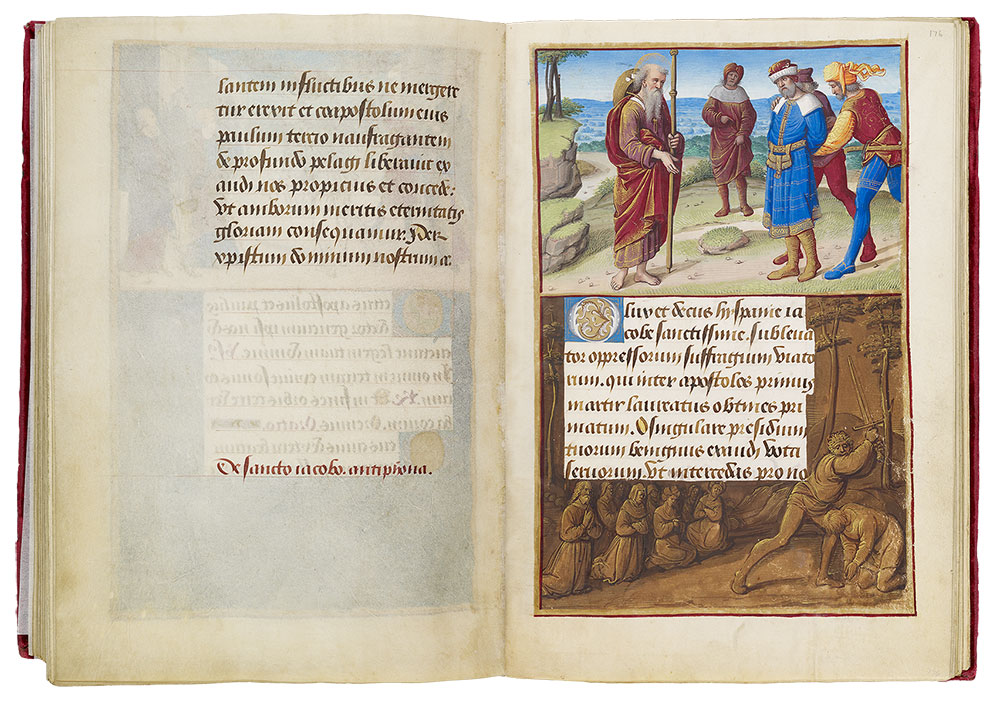MS H.8, fols. 175v–176r

St. James: St. James with Hermogenes
Hours of Henry VIII
Illuminated by Jean Poyer
Gift of the Heineman Foundation, 1977
St. James: St. James with Hermogenes
Border: Decapitation of James (fol. 176)
James the Greater, or Elder (he was the older of two Apostles named James), was the brother of John the Evangelist. Here Poyer rendered the demons holding Hermogenes as exotically dressed soldiers, while the converted Philetus looks on. The terrified magician repented and promised to destroy his magic books.
After Christ's Ascension, James preached in Judea and Samaria, and then went to Spain. When he returned to Judea, the Pharisees requested that the magician Hermogenes should send his disciple, Philetus, to confront and refute the saint.
St. James performed some miracles, resulting in the conversion of Philetus and the rage of Hermogenes, who then ordered two demons to capture James and Philetus. Warned of the plot, the saint prayed that the demons bind and deliver Hermogenes instead, which they did.
The terrified magician repented and promised to destroy his magic books. Afraid of the demons, Hermogenes asked for something that belonged to the saint to prevent their attack, so James gave him his staff; when the converted magician returned with his tomes, the Apostle threw them into the sea.
The disappointed Pharisees dragged the saint before Herod Agrippa, who condemned him to be beheaded (A.D. 43). In the margin a crowd of kneeling men and women witness James's decapitation. This story apparently was modeled on that of Peter and Simon Magus in the preceding narrative.
James's Decapitation
After James's death, angels transported his body to Spain, where it lay on a stone that closed over it. His relics were discovered in the year 800 and taken to Compostella, which became a major pilgrimage site in the Middle Ages.
Pilgrims would return with badges as souvenirs, especially scallop shells (see also M.50 fol. 3); these were valued and often handed down as legacies. By the late Middle Ages, the saint himself was depicted as a pilgrim—his costume including a satchel decorated with a shell, a large hat, a traveler's cape, and staff; in the miniature two scallop shells decorate James's hat. (Feast day: July 25)